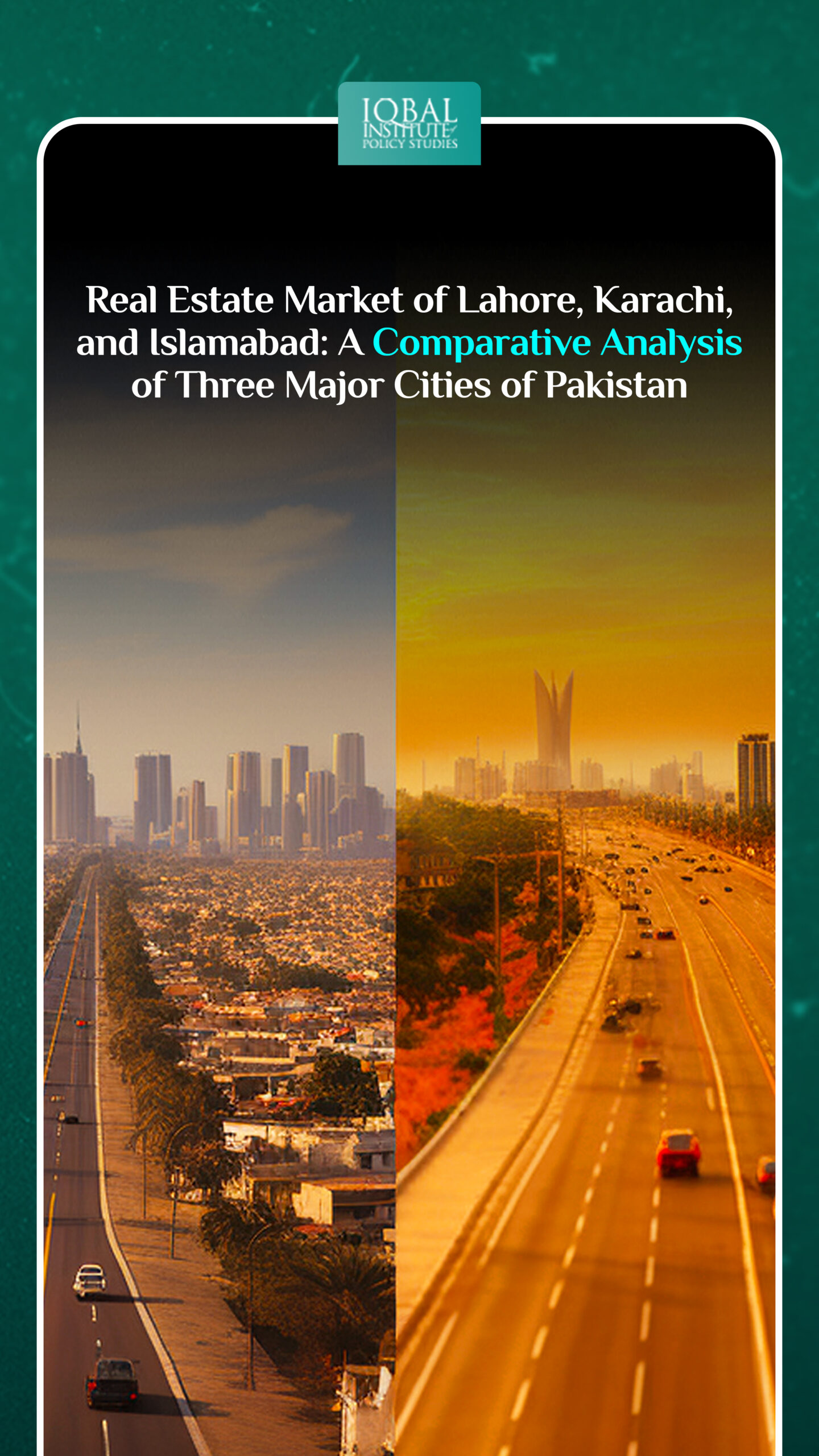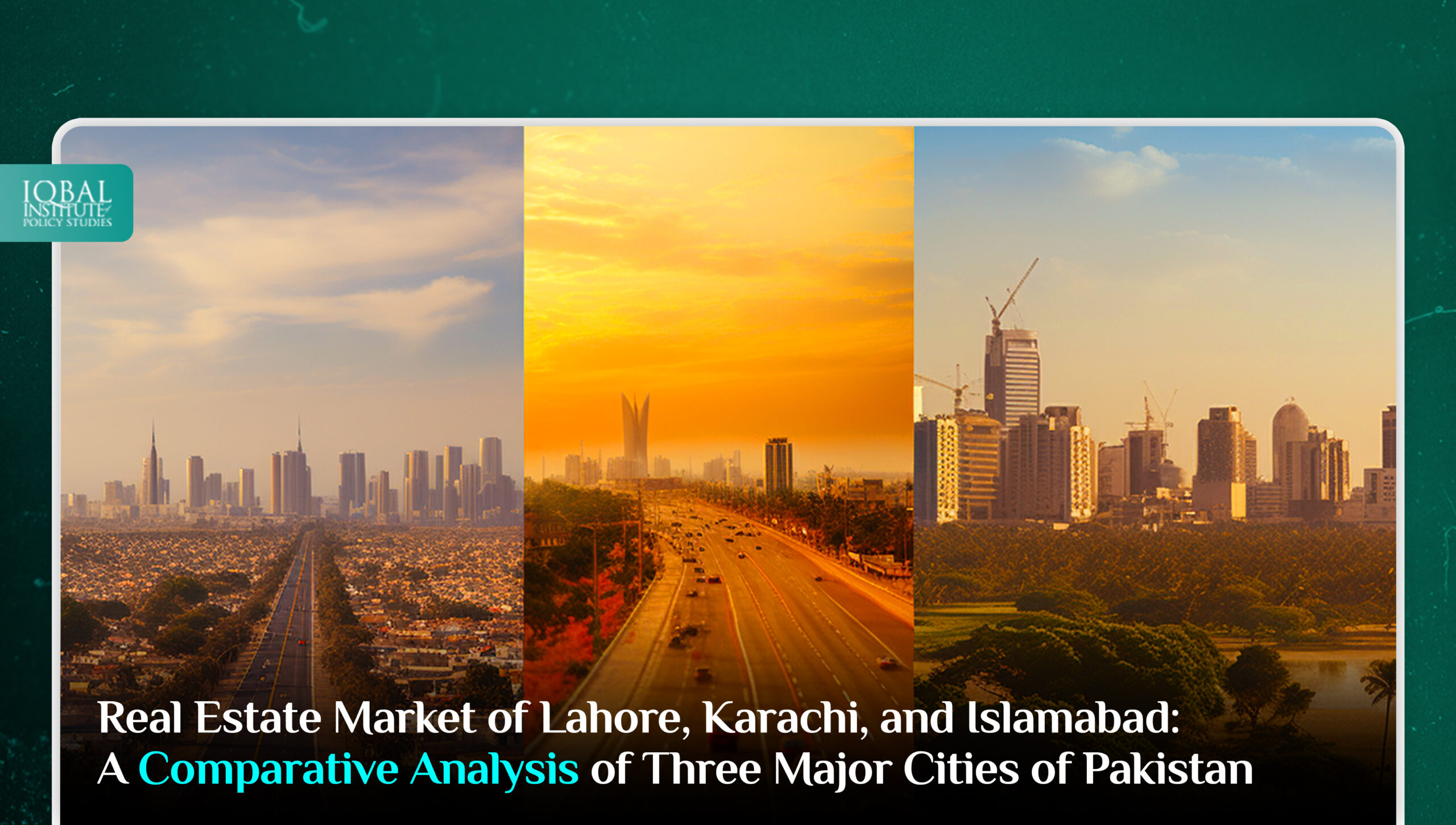Pakistan’s real estate market is a dynamic and thriving sector, shaped by the rapid urbanization and growing population of the country. Among the major cities, Lahore, Karachi, and Islamabad stand out as key players in the real estate landscape, each boasting unique attributes and investment potential. As urban centers of cultural, economic, and political significance, these cities attract investors, developers, and homebuyers seeking diverse opportunities in residential, commercial, and mixed-use properties.
In this comprehensive analysis, we explore the real estate markets of Lahore, Karachi, and Islamabad, drawing attention to the factors that contribute to their growth, the emerging trends shaping the industry, and the challenges they face. Each city offers a distinct tapestry of architectural heritage, economic prowess, and natural beauty, making them magnets for investors seeking rewarding ventures
Lahore: Cultural Heritage and Modern Living
Lahore’s real estate market showcases a unique blend of cultural heritage and modern living. The city’s rich history is evident in the well-preserved Mughal-era landmarks, such as the Lahore Fort and Shalimar Gardens, which add to the allure of the old city. Investors and developers have capitalized on this cultural charm by restoring historic havelis and converting them into boutique hotels and high-end residences.
In recent years, Lahore has witnessed significant growth in the development of gated communities and housing societies on the outskirts of the city. These projects offer modern amenities, landscaped parks, and community centers, catering to the rising demand for upscale living. Areas like Bahria Town and Defense Housing Authority (DHA) are particularly popular among investors and expatriates seeking secure and well-planned neighborhoods
Karachi: Commercial and Residential Hub
As the economic powerhouse of Pakistan, Karachi’s real estate market revolves around commercial and residential properties. The city’s diverse population, ranging from local businesses to multinational corporations, drives the demand for office spaces, retail outlets, and commercial developments.
Areas like Clifton, Defense, and Gulshan-e-Iqbal are prominent commercial hubs, housing high-rise office buildings, shopping malls, and entertainment centers. On the residential front, Karachi offers a mix of apartments and houses catering to various income levels. From affordable housing schemes to luxury penthouses, the city accommodates a wide range of investors and homebuyers
Islamabad: Green and Sustainable Development
Islamabad’s real estate market stands out for its focus on green and sustainable development. As the capital city, Islamabad has strict regulations to maintain its natural beauty and protect the environment. Many housing societies in the city emphasize green spaces, parks, and tree-lined avenues, contributing to a serene and eco-friendly living experience.
The city’s planned layout and well-maintained roads enhance the quality of life for residents. Projects like Bahria Town and Gulberg Greens have gained popularity due to their sustainable infrastructure and commitment to environmental preservation. Additionally, Islamabad’s status as a diplomatic hub attracts foreign investors and diplomatic missions seeking secure and upscale residences.
Comparative Analysis
Property Trends
The property trends in Lahore, Karachi, and Islamabad are influenced by a combination of factors, making the real estate markets dynamic and responsive to changing conditions. Supply and demand dynamics play a crucial role in determining property trends in all three cities. While Lahore and Karachi witness robust growth in both residential and commercial sectors, Islamabad’s real estate market is uniquely influenced by the demand for government-related projects and diplomatic missions.
In Lahore and Karachi, the residential sector experiences continuous development due to the growing population and increasing urbanization. Commercial properties, such as office spaces and retail outlets, also thrive in response to the burgeoning business activity and economic opportunities. On the other hand, Islamabad’s real estate market sees a significant focus on government-related projects, as the city serves as the administrative and political capital of Pakistan. The demand for diplomatic missions and housing for government officials contributes to the unique property trends in the city.
Investment Potential
Each of the three cities presents distinct investment potential for real estate investors. Lahore’s investment landscape benefits from its growing population, expanding industrial sectors, and a booming services industry. The city’s strategic location and the development of key infrastructure projects attract investors looking for lucrative residential and commercial opportunities.
Karachi, as the economic powerhouse of Pakistan, offers diverse investment options in the commercial real estate sector. Investors seeking high rental yields and long-term returns are drawn to the city’s bustling commercial centers, shopping malls, and office spaces. The city’s cosmopolitan nature and dynamic business environment contribute to its attractiveness as an investment destination.
Islamabad’s investment potential is characterized by stability and long-term prospects. As the political and administrative center of the country, the city attracts investors seeking secure and reliable ventures. Additionally, the development of the China-Pakistan Economic Corridor (CPEC) and the New Islamabad International Airport have further boosted Islamabad’s investment potential, making it an increasingly appealing destination for both local and international investors.
Infrastructure and Connectivity
Infrastructure and connectivity play a vital role in shaping the real estate markets of Lahore, Karachi, and Islamabad. Islamabad stands out in this regard, with its well-planned infrastructure and efficient transportation networks. The city’s grid layout and well-maintained roads provide easy access to major areas, making it a preferred choice for investors and residents alike. Additionally, the New Islamabad International Airport enhances the city’s connectivity and attractiveness for both domestic and international investors.
In contrast, Lahore and Karachi face challenges related to traffic congestion and connectivity issues in rapidly expanding urban areas. The development of adequate infrastructure is crucial to easing transportation bottlenecks and supporting the growing demand for residential and commercial properties in these cities. Addressing these challenges is essential to unlocking the full potential of the real estate markets in Lahore and Karachi.
Market Dynamics
The real estate markets of Lahore, Karachi, and Islamabad are influenced by various market dynamics, including political stability, economic performance, and government policies. Political stability plays a significant role in providing a conducive environment for real estate investments. Investors are more inclined to put their money in cities with a stable political climate, as it instills confidence and reduces uncertainty.
Economic performance is another critical factor impacting real estate markets. Strong economic growth translates to increased demand for both residential and commercial properties, leading to price appreciation and rental income opportunities. Conversely, economic downturns can dampen the demand for real estate and lead to a temporary slowdown in the market.
Government policies, including tax regulations, property laws, and incentives for real estate development, also shape the market dynamics in these cities. Favorable policies can attract investments and stimulate growth, while restrictive policies may hinder market activity.
Conclusion
In conclusion, the real estate markets of Lahore, Karachi, and Islamabad offer diverse opportunities and respond differently to various factors. Understanding the comparative analysis of these major cities can guide investors in making informed decisions and seizing the immense potential that each city has to offer. Whether it’s Lahore’s cultural charm, Karachi’s economic prominence, or Islamabad’s stability, each city contributes uniquely to Pakistan’s thriving real estate sector.
The real estate markets of Lahore, Karachi, and Islamabad exemplify the diverse and evolving landscape of Pakistan’s property sector. While Lahore thrives as a cultural and commercial center, Karachi dominates with its economic prowess, and Islamabad stands tall as the country’s political capital. Investors and homebuyers can capitalize on the unique opportunities presented by each city, understanding that market dynamics and trends may differ based on various factors. As these cities continue to grow and develop, the real estate sector remains a key player in shaping the urban landscape of Pakistan, making it an exciting and promising sector for both local and international investors.
This article is written by Maha Nazami. Maha is a research analyst at the Iqbal Institute of Policy Studies (IIPS).



Leave a Reply